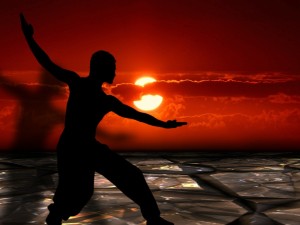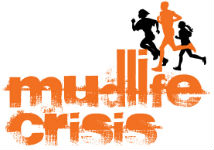 So, over the past few days, a couple of slight mishaps and a whole lot of fun have brought a new round of mindfulness into my movement practices.
So, over the past few days, a couple of slight mishaps and a whole lot of fun have brought a new round of mindfulness into my movement practices.
But first, a little background. I think I’ve mentioned before that I was a competitive swimmer as a youth. I swam with our local US Swimming and later high school swim team from about age 7 through 18, finishing my last swim meet in March of 1987. And while I enjoyed it a lot, and was constantly in pretty darned good cardiovascular shape, the one gripe I have with it is that…well, I think it kind of numbs your brain a bit.
Swimming 7-8000 yards a practice, back and forth for hours in a pool, sometimes twice a day during the season, tends to wear on you mentally. Sure, it wasn’t just nonstop yards all day, it was broken up into sets with specific goals, facets of stroke work to focus on, and the like. But let’s face it: the grind of yardage is a big part of the sport. Some people can get into that – getting a meditative mindset about it all. I don’t think I was one of those people.
I also played soccer, when it was a possibility. I played summers for several years in elementary and middle school, and in the fall in middle school when we finally put together a travel team, but there was no high school soccer in my city. I loved soccer (to the point where I picked it up again as an adult after moving to Columbus in the late ’90s) – I loved the development of skills, the attention paid to everything going on around you, and the constant presence of the ball and where you were going to position yourself for the next play. I actually got pretty good at it, though the opportunity to play wasn’t as great as the opportunity to swim was.
As I got older, and actual sports were less a part of my life, I started to try to work out the same way that many people do when they get into their adult years: lifting weights (usually with machines) and cardio (usually on a treadmill or some other machine). This, naturally, was the very definition of torture for a mind that loved the variety of movement in a sport like soccer – but I was convinced by conventional wisdom that this was the way to go for the best long-term health…
…Until I discovered a martial art system based on historical European long sword techniques. It was sort of a historical re-enactment type thing to the outsider, but the idea was that there exist dozens, if not hundreds of medieval-era and renaissance-era “fighting manuals” where great masters of European martial arts recorded their techniques. And though the arts themselves had been lost to the winds of time for a long time, the books still existed in many places, and people were using them to try to recreate those arts (well, they still are – I’m still in touch with a lot of those folks). There was a ton of attention you had to pay to your movements to figure out if you were doing the movements correctly and if they were actually something that could be used in combat.
That led into conditioning for that activity, and a new appreciation for doing workouts that were short in duration, hard, but almost required a mindful attitude in their execution. Learning exercises like Hindu Squats and Push-ups, wrestlers’ bridges, handstands, proper pullups, and more was a new thing for me. Learning to pay attention to breathing patterns, proper body placement and positioning, and feeling the sensations of the movements when done correctly was an amazing thing for me. It started me on a path for movement and exercise that I still have to this day. The discovery of MovNat and the philosophy around it was merely the final act in a performance that stays with me even today.
So…the mishaps. Neither of them was awful, but potentially embarrassing.
Case 1: we have a new puppy in the house, and right now he’s not allowed upstairs till he gets housebroken. So we have one of our old baby gates blocking the little pooper at the bottom of our stairs. I have gotten in the habit of trying to mindfully step properly over the gate to get over it (giving myself a little challenge in the process, another habit I’m giving myself). MovNat has a technique for just this sort of movement:
So at one point the other night, my son was up and out of bed and messing around upstairs. My wife was working on something and asked me to run up and check in him. So, as I was reading on my Kindle and didn’t want to stop my reading flow, I stepped over the gate without looking and paying attention.
That’s right. CRASH!
And there was much mocking going on.
Mishap #2: happened just yesterday, as I was doing some of my handstands on a break from the office. I was thinking more about the problem I was working on and less on making sure my arms were in the proper position. So I put my hands down, and a little-too-quickly threw my legs up. And as soon as my feet struck the wall I knew there was trouble. My right arm was shaking a bit. And so I sort of fell over to my right and my elbow lightly hit the carpet. No big deal, but it could have been more serious, for sure. Message received – pay attention whenever you’re doing an exercise or movement.
But it’s not just about preventing injury, though that’s obviously a big old goal. Paying attention to your movement and feeling yourself manipulating your body throughout your world is an amazing way to experience that world. Knowing how your body moves, detecting and understanding the places in your system that need more, less, or different movement, and getting to know just how your body is going to respond when you try a movement is an incredibly eye-opening feeling.
So let me suggest this: if you’re a person who hops on the treadmill with a magazine or in front of a TV; or blasts heavy metal while lifting weights; or speed walks while chatting with friends; take some time in a quiet room or some location with no distractions. No other people, no electronics, no reading, no nothing. If you can do it in nature, all the better. Get down and do some pushups – whatever you can do. Try some air squats. Do them slowly. See what response your body has. Journal it – write it down. And do this little ritual on occasion – adding new movement and taking some away. Just feel what your body is capable of and write it down.
See what you can learn about yourself. You might find out something that you really like.






